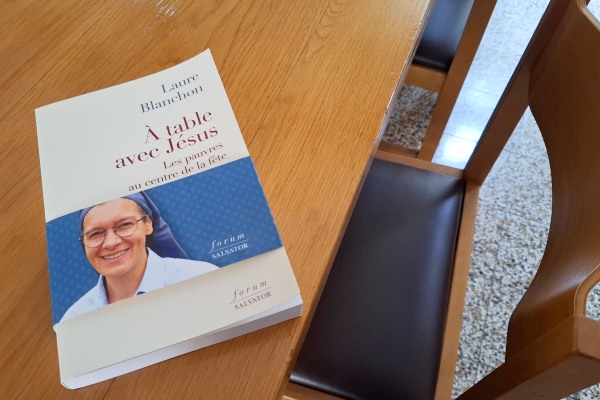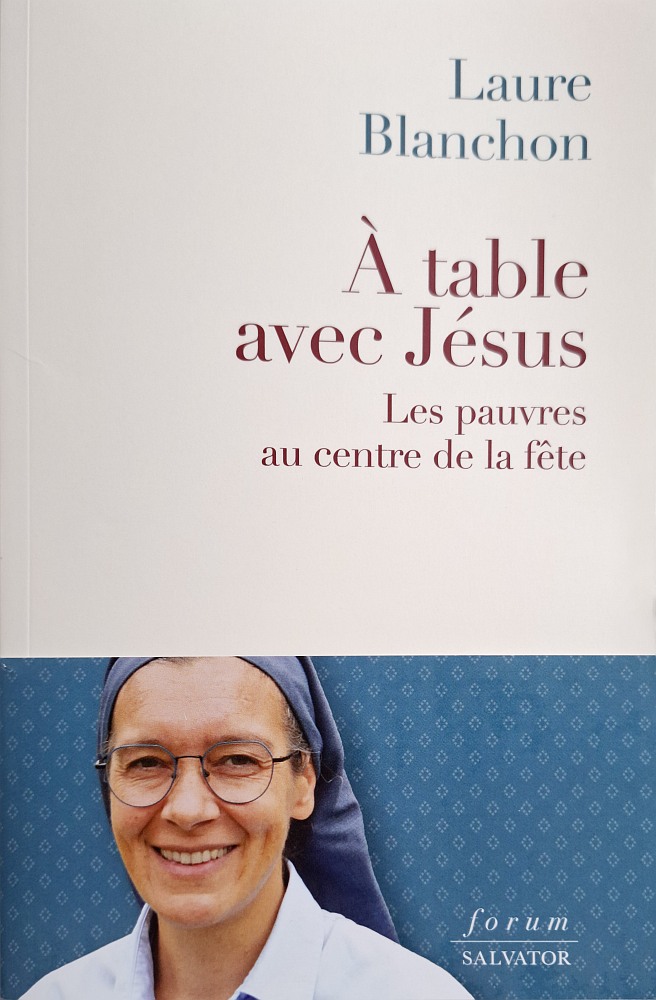“At table with Jesus. The poor at the centre of the celebration”, by Laure Blanchon, osu
02/06/2025

Over the last decade, the number of meals shared in the Church has multiplied: parish meals open to all, friendly gatherings that include a meal, festive celebrations open to all... What do these moments mean for the most vulnerable? And what kind of Church is emerging from such experiences? Wouldn't this be a stimulating way to be a disciple of Christ? The gospel story very often presents Jesus at table with various guests. What do we notice when we read these stories, particularly when we look at them in the company of people in precarious situations?
 When we read the Scriptures, it becomes clear that Jesus establishes a close link between a certain type of sharing at table and the Kingdom of God that is taking place right now. This is explored in my new book "À table avec Jésus. Les pauvres au centre de la fête” (At table with Jesus. The poor at the centre of the celebration), which has just been published in French by Editions Salvator, May 2025.
When we read the Scriptures, it becomes clear that Jesus establishes a close link between a certain type of sharing at table and the Kingdom of God that is taking place right now. This is explored in my new book "À table avec Jésus. Les pauvres au centre de la fête” (At table with Jesus. The poor at the centre of the celebration), which has just been published in French by Editions Salvator, May 2025.
The structure of the book "At table with Jesus. The poor at the centre of the celebration"
First there is an introduction entitled ‘Like him, we shared the table’. These pages form a kind of way in, beginning with a journey through the diocese of Tours to look at various kinds of shared meals and end this first section with a surprise: most people say that these meals are a good experience, a source of life, made up of friendship and equality between everyone, but only one or two people mention the reality of the Kingdom of God in connection with what they experienced.
Then I began to read the Scriptures. To explore the meaning Jesus wanted to give to his meals with his disciples. I went through six chapters. Each one deals with an account of a meal in which Jesus sits at table with a number of guests and talks with them. In this way, the book enables us to read six pages of Luke's Gospel: first, Jesus' meeting with Levi, followed by a feast to which he invites everyone; then the multiplication of the loaves; then the evening at the home of Martha and Mary; then the invitation to dinner at the home of a Pharisee, which is an opportunity for Jesus to call people to stop inviting only people from the same social background as them, but instead to risk inviting the poor; then the Last Supper, and finally the meal at Emmaus. In this way, the chapters follow the life of Jesus, from the beginning of his public life to the mystery of his death and resurrection. The study of each story identifies its structure and draws on a number of exegetical works.
Then the exchanges and comments made by members of the Fraternité Saint Martin de Tours on this text are analysed. (The Fraternité Saint Martin de Tours is a diocesan biblical group where people living in extreme poverty and people without this experience share the Word of God, a meal and fellowship every month). From there, I took the theological analysis of this Gospel passage a step further. Nourished by this personal reading of the Scriptures and deepened in the light of the words of the friends of the Fraternité Saint Martin, little by little I have developed an understanding of what is at stake in these meals for Jesus. I discovered that all these meals are placed in expectation of the feast of the Kingdom and that Jesus delivers into our hands the unfolding of the feast of the Kingdom, right now, in the life of this world.
This brings me to the final stage entitled: ‘Opening, the feast of the Kingdom begins’. After revisiting what I learnt from reading the six meal accounts, I move on to a more global reflection on the feast of the Kingdom and the implications and calls that this understanding of the Kingdom generates for the Church today: it is up to the Church to contribute to making the eschatological feast a reality in history right now.
Enjoy your reading.
Laure Blanchon, osu
To find out more, listen to the podcast (in French) ►
https://www.loyolaparis.fr/audio/a-table-avec-jesus/
To order a book with a dedication
